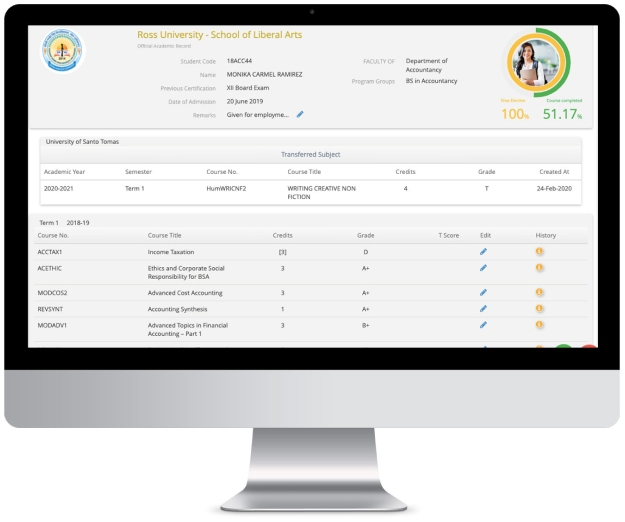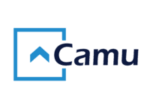What are Admissions and Enrollment Management Software?
Admissions and Enrollment Management Software is a specialized software designed to help educational institutions streamline their admissions and enrollment processes. These software applications allow schools to manage all aspects of the admissions process, from application processing to applicant communication, to enrollment management and beyond.
The software is designed to make the process easier, faster, and more efficient, allowing institutions to handle larger volumes of applications with fewer resources. With Admissions and Enrollment Management Software, educational institutions can achieve higher levels of productivity, efficiency, and accuracy, and deliver a better experience to both applicants and staff.


Student Enrollment System and How Online Admission Process Works
The Student Enrollment System is a crucial component of any educational institution, allowing schools to manage the enrollment process from start to finish. With the rise of digital technology, many schools are now transitioning to online admission processes, which offer numerous benefits for both students and institutions. Here's how it works:
- The online admission process begins with the creation of an application portal.
- The portal is designed to be user-friendly, making it easy for users to submit the necessary documents and pay the required fees.
- Through the portal, students can conveniently track the status of their application.
- Automatic confirmation emails are sent to students after submission.
- Admissions staff can manage and track the application review process online.
- Accepted students can enrol and pay fees online, making the process seamless and convenient for all involved.
Key Features to Consider When Choosing an Enrollment System
To select the best Enrollment System, it is crucial to consider whether its features fit your institution’s requirements. Here are some essential features to look for
With Camu’s Enrollment System, you can enjoy these features and more, helping your institution manage the enrollment process with ease and efficiency.
- Communication and behaviour tracking: Keep track of student communication and behaviour to better understand student needs and improve retention rates.

- Automated follow-ups: Automatically send follow-up messages to prospective students to keep them engaged in the enrollment process.
- Inquiry Management: Manage inquiries and track leads to improve enrollment rates and student satisfaction.
- Admission Analytics: By monitoring admission trends and performance metrics, you can make informed decisions based on data and improve your outcomes
- Task Management: Keep track of tasks and deadlines related to the enrollment process, ensuring a smooth and efficient process.
- Setting Parameters for Lead Prioritization: Establishing parameters to prioritize leads helps in allocating resources efficiently.

Benefits Of the Student Enrollment System
Here are some of the key benefits of using a Student Enrollment System:
- Streamlined enrollment process: The system automates many of the steps involved in enrollment, including application submission, payment, and enrollment, reducing the need for manual processes and paperwork.
- Improved communication: The system can help improve communication between students, admissions staff, and other stakeholders, providing a centralized platform for communication and document sharing.
- Enhanced data management: With a Student Enrollment System, you can more easily manage and analyze data related to enrollment, admissions, and other key metrics, helping you make more informed decisions.
- Better student experience: With features like online application submission and automatic follow-up messaging, the system can help create a smoother, more convenient enrollment experience for students.
- Increased efficiency: By automating many of the tasks involved in enrollment, the system can help institutions save time and resources, allowing staff to focus on other priorities.
- Improved outcomes: With better communication, data management, and efficiency, a Student Enrollment System can help institutions improve enrollment rates and outcomes while providing a better overall experience for students and staff alike.
What is the difference between a Standalone Enrollment System and one that is integrated with an Education CRM?
Here are some of the key benefits of using a Student Enrollment System:
| Feature | Enrollment System | Education CRM |
|---|---|---|
| Purpose | Manage the enrollment process, from application to enrollment | Manage the entire student lifecycle, from application all the way to graduation |
| Main Functionality | Application submission, payment processing, enrollment management | Admissions management, student lifecycle management, staff records management, accounts receivables and fee management, attendance management, assets/inventory management, CoE module, accreditation management, placements, transport, accommodation, and many more |
| Data Management | Focuses on data related to enrollment and admissions | Manages a wider range of student data, including academic records, financial aid, and more |
| Communication | Typically includes basic communication features, such as email and messaging | Offers more robust communication tools, such as email marketing, social media integration, and automated messaging |
| Integration | Needs other software or custom development to integrate with a student information system | Natively integrated with the student information system, learning management system and a wide range of other tools. |
| Scope | Tends to be focused on a specific area of the student lifecycle | Covers the entire student lifecycle, from recruitment to graduation and beyond |
Why Use Camu’s Student Enrollment System?
Choosing the right student enrollment system can make a big difference in the success of your institution. With Camu's Student Enrollment System, you can streamline your entire enrollment process and provide a better experience for your students.
Our system offers a wide range of features, including communication and behaviour tracking, automated follow-ups, inquiry management, admission analytics, and task management. Plus, our system is highly customizable, allowing you to tailor it to the specific needs of your institution.
By using Camu's Student Enrollment System, you can improve your enrollment rates, reduce administrative burdens, and provide a better experience for your students. With a focus on ease of use and exceptional customer service, we're confident that our system is the right choice for your institution.


Who Uses Admissions and Enrollment Management Software?
Admissions and enrollment management software is an essential tool for any educational institution that wants to streamline the enrollment process and ensure the smooth operation of its admissions office. Here are some examples of who uses admissions and enrollment management software:
- K-12 Schools: Admissions and enrollment management software can help K-12 schools manage student admissions and enrollment more efficiently.
- Colleges and Universities: Higher education institutions can use admissions and enrollment management software to manage the application process, track student inquiries, and enroll students.
- Vocational Schools: Vocational schools can integrate software to track student enrollment, including registration, tuition payments, and financial aid.
- Online Learning Platforms: Online learning platforms can benefit from admissions and enrollment management software to help manage student enrollment and track progress.
Get Started
If you want to know more about Camu product offerings, we are happy to help.
Speak to our Product Experts
Our Blogs
Our News
Resources
Frequently Asked Questions
1. What are the benefits of an online student enrollment system?
The student enrollment system offers numerous advantages. One key advantage is the online registration process, which is not only easy to use but also quick and convenient. It automatically notifies the parents or staff about the progress of the enrollment process via mail or message. Once the student is admitted, the student record seamlessly flows into the Student Information System without having to be entered again. Moreover, through an automated process, it sends payment notifications to parents and also reminders for pending payments. There are many more advantages too.
2. What is an admission management system?
The admission management system is a computerized solution that enables educational institutions to effortlessly manage the student enrollment process. It automates and streamlines the process of managing and tracking student applications, selecting the applicants for admissions and enrollment in educational institutions such as schools, colleges and universities.
3. What is an online admission system?
An online admission system is a software application that enables educational institutions to manage the entire admission process online. It automates the admission process from application submission to admission decision, making it easier and more efficient for both the applicants and the organization.
4. What are the steps involved in managing the student enrollment process with the student enrollment system?
To effectively manage the student enrollment process using a student enrollment system, follow these steps:
- Set up the system:
Begin by configuring the student enrollment system with essential parameters, such as academic terms, programs, courses, fees, and any other pertinent information.
- Kick-off online submission:
Trigger sending of messages/emails to students to submit their personal and academic details through an online platform.
- Process and review applications:
Use the system to evaluate the qualifications of the applicant and verify the provided information and documents.
- Offer admission:
Shortlist the suitable candidates based on the established criteria and send offers of admission.
- Receive acceptance of the offer:
The student then accepts or rejects the offer online.
- Track payments:
Track the payment of admission fees and other fees using the dashboard and reports provided by the system.
5. Why is the student enrollment management system important in educational institutes?
The student enrollment management system is important in educational institutes as the system automates the process, improving its speed and efficiency and reducing errors. Applicants can effortlessly submit their applications online, conveniently track their progress, and receive automated notifications about the status of their applications.
6. What features does the student enrollment management system offer?
The features of a student enrollment management system include a user-friendly interface that allows tracking and monitoring the admission status, the capability of the students students to select and register for courses based on their program requirements, and academic prerequisites, provision to make online payments and receive notifications for pending fee reminders.
7. Why should an institution use admissions and enrollment management software?
Educational institutes should use admissions and enrollment management software because it automates and streamlines the admissions process. Thus it reduces the workload of the admissions staff, can free up staff time, and provides a competitive advantage.
8. What capabilities should your enrollment management software have?
Camu Digital Campus as the leading enrollment management software we provide:-
- Provide a user-friendly interface to the students and the users.
- Be able to seamlessly Integrate with a Student Information System (SIS).
- Allow students to register for courses based on their academic requirements and prerequisites.
- Should enable students to make secure online payments for tuition fees, admission fees, and other related expenses.
- Send SMS and e-mail notification facility for pending fee reminders.
- Generate receipts of fees automatically.
Camu Digital Campus is a leading enrollment management software that provides all the above capabilities.













